Delight in Georgian life above and below stairs
The captivating No.1 Royal Crescent is located at the eastern end of the sweeping, majestic grand terrace in Bath. There are 30 magnificent Georgian townhouses standing proudly shoulder to shoulder around the horseshoe crescent. They are such a spectacular showcase for Georgian architecture and one reason we were inspired to visit Bath.
When you stop and admire the Royal Crescent, you can just imagine the well-to-do residents promenading around the splendid crescent in their finery.
The Royal Crescent is so synonymous with the UNESCO historic city of Bath that it’s a ‘must visit’ on your Bath itinerary. Along with the fascinating tour of No1. Royal Crescent.
Pre-booking your tour of No.1 Royal Crescent is advisable as there are only a limited number of walk-ins each day.
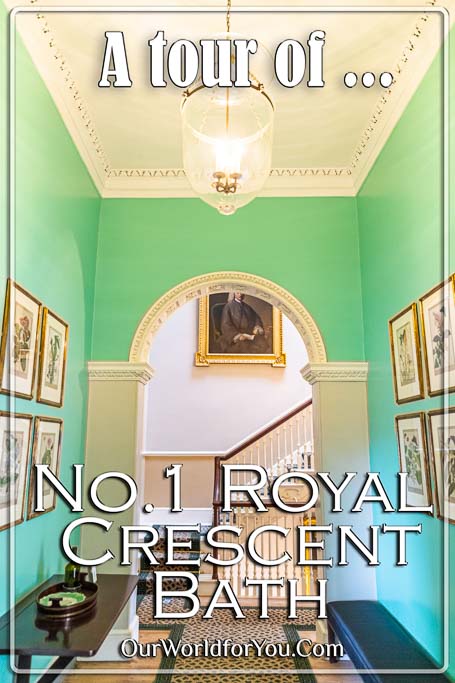
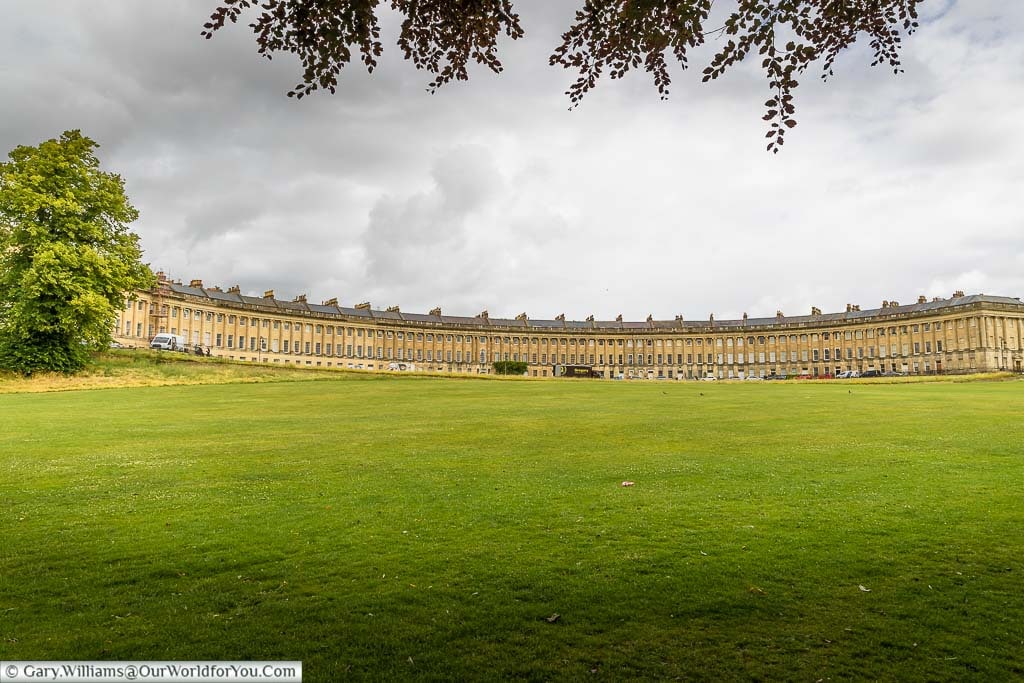
The Royal Crescent was designed by the architect John Wood, the Younger; it was built of Bath stone and erected between 1767 and 1774. This fine and imposing row of Georgian terrace houses is now a Grade 1 listed building.
It’s important to note that during the period in which Georgian Bath was being built, it was largely with proceeds from the British Slave Trade. It is a meaningful and important part of our history and should be remembered.
Where is No.1 Royal Crescent?
How to get to No.1 Royal Crescent
- By Train
The central railway station in Bath is Bath Spa, 1 mile away (around a 20-minute walk). A high-speed service runs from London Paddington.
- On Foot
If you are in the city, head to Royal Crescent and on the eastern corner is No.1.
- By bus or Coach
Arrival by coach or bus to the city, you will be dropped off at Bath bus station, which is a twenty-minute walk to No.1 Royal Crescent. National Express run a regular service from London Victoria. There are various bus routes in Bath run by First Buses, which will drop you nearby.
- By Car
If you are arriving by car, the nearest car park is Charlotte Street. There are many central car parks in Bath, alternatively, you can use the Park and Ride facility.
Our tour of No.1 Royal Crescent
A fly on the wall of Georgian lifeNo.1 Royal Crescent is owned and managed by the Bath Preservation Trust. They have transformed this majestic townhouse into an incredible fly-on-the-wall experience.
The beautiful house has been decorated, styled, and furnished to reflect the lives of those living upstairs and downstairs during the late 18th century between 1776 and 1796.
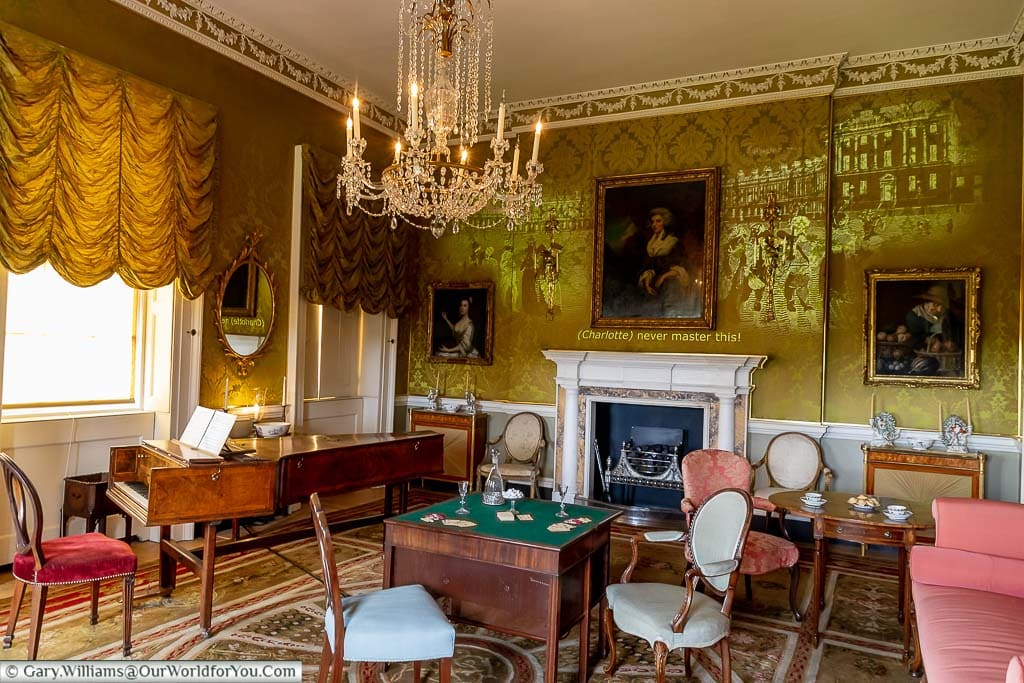
A new captivating and immersive experience of the ‘Georgians at home in Bath’ has been thoughtfully designed. Throughout the museum at No.1 Royal Crescent, you are guided through the Georgian family home, earwigging into the family’s trials and tribulations as you stroll from room to room.
No.1 Royal Crescent is brought to life through sight and sound. In each room you enter, there are so many tiny little details which really make the tour an enjoyable experience.
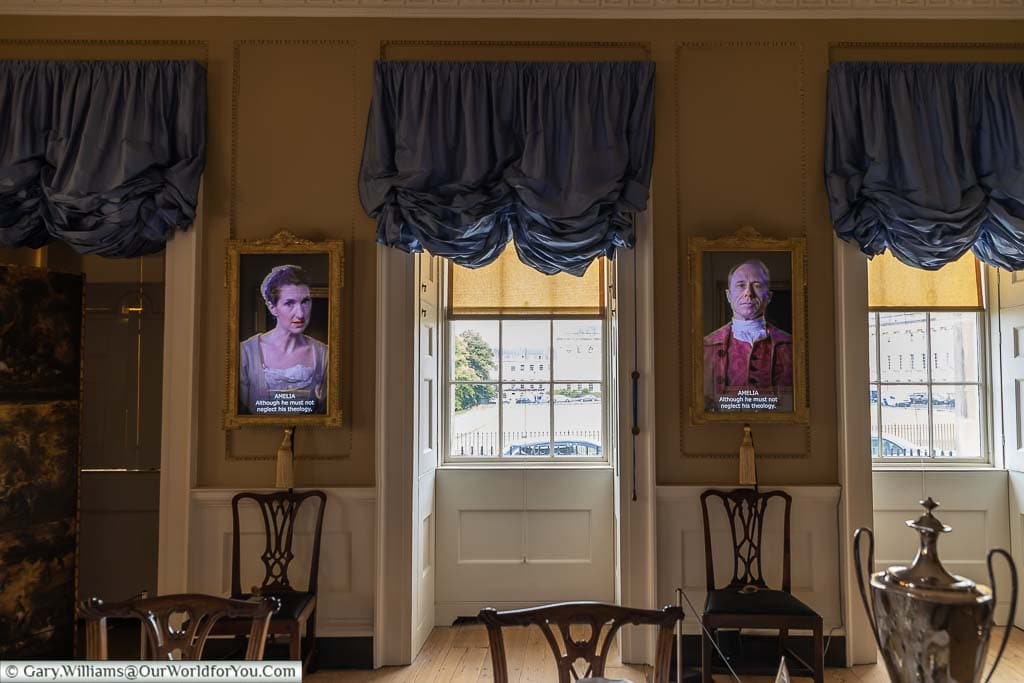
No.1 Royal Crescent Dining Room
A very formal affair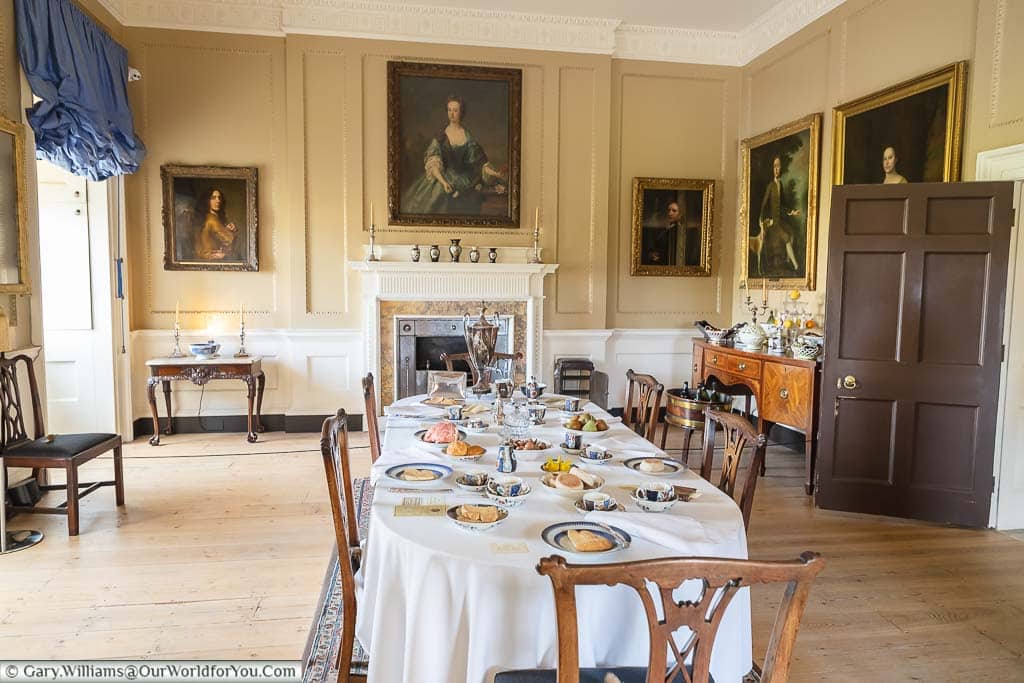
In the museum today the dining room is laid for breakfast. You are free to wander around the dining room at your leisure, appreciating the finer things in life during the late 18th-century. The items of food that we take for granted today were often only experienced by the wealthy, particularly sugar.
The highlight of a Georgian dinner was the dessert, especially made with sugar; sugar sculptures would often be made to portray the family's wealth.
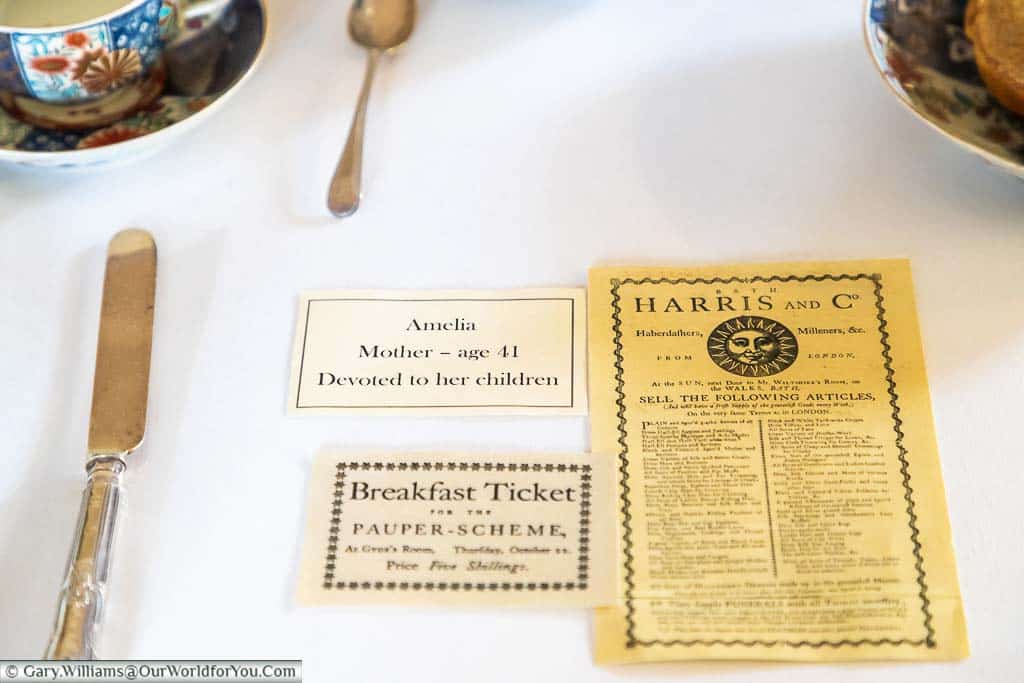
If you're intrigued to visit the historic cities of Bath and Bristol, then why not check out Lonely Planet's pocket travel guide. Full of helpful advice, interesting facts and time-saving tips.
You can pick it up for your Kindle or in good old paperback.
Off to the Parlour
Then a Gentlemen’s RetreatOpposite the elegant dining room is the Parlour and a little less formal.
The tranquil Parlour could be used for various everyday activities, from an informal cup of tea with the housekeeper to discuss day-to-day entertaining to utilising it as a family room.
The parlour was often used by the head of the household to catch up on business matters, letter writing and a peaceful space for daily reading.
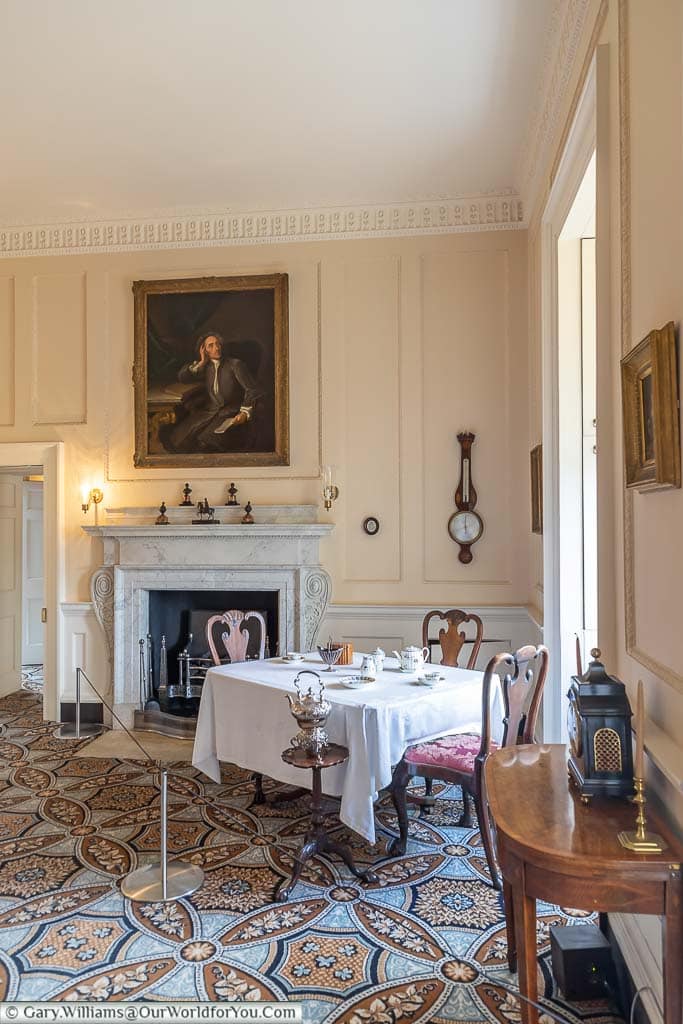
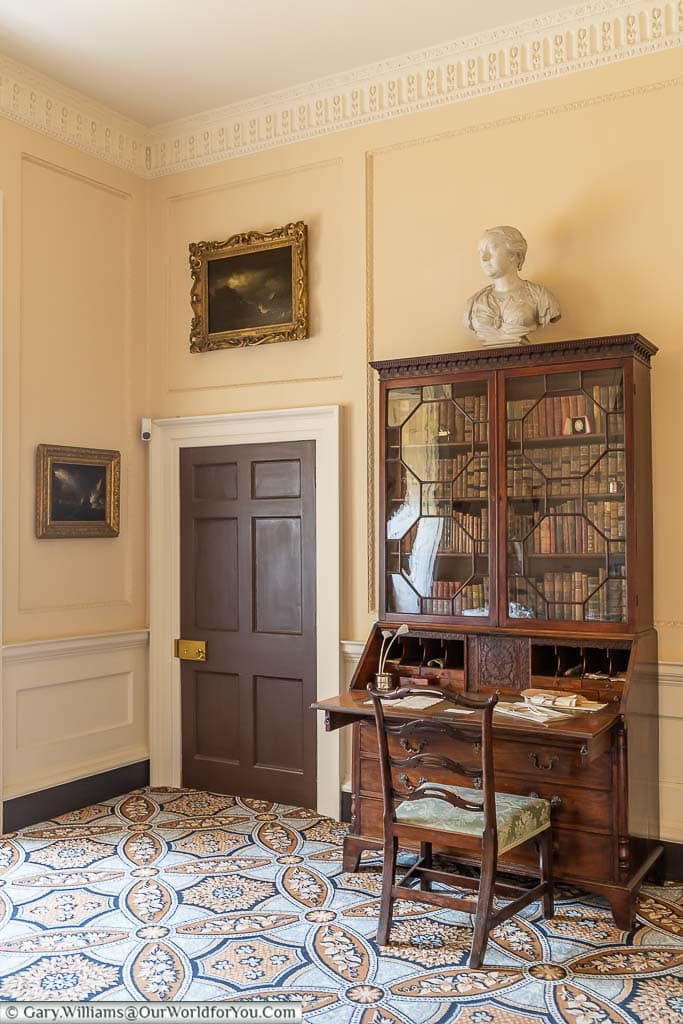
The following charming room we visit on the No.1 Royal Crescent tour is the ‘Gentleman’s Retreat’, yes, you guessed it, ‘men only’.
The possessions in this private room or study would often reflect the interest and activities that the head of the household undertook. Whether it’s architecture, travel, or the natural world. I especially liked the globe as I’ve collected a few myself.
In the Gentleman’s Retreat, you can listen to the unfolding story of the eldest son of the household. He will eventually inherit the family estate.
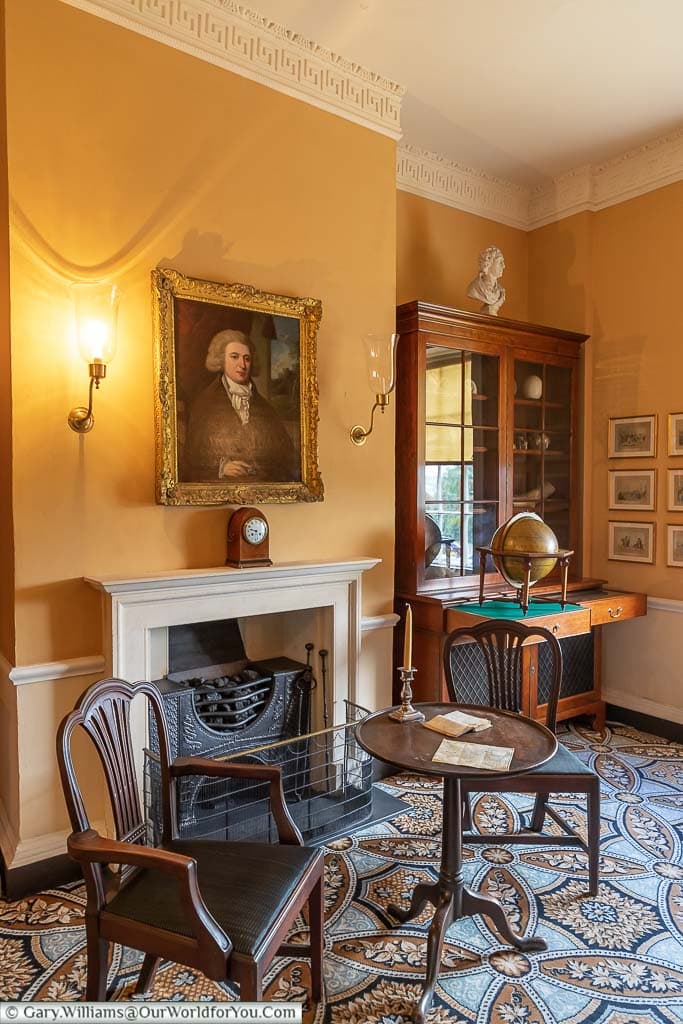
Tourist Information
Visiting the lady’s boudoir
It’s not all manicured perfectionWe venture further up through the Georgian house, admiring the detailed architrave and subtle lighting. Our next stop is to the lady’s bedchamber.
The lady’s bedroom was her inner sanctum, and usually, the lady of the house would have a dedicated Lady’s Maid.
The Lady’s Maid was a very discreet job as she would look after her mistress’s day-to-day dressing and undressing and often know her personal business.
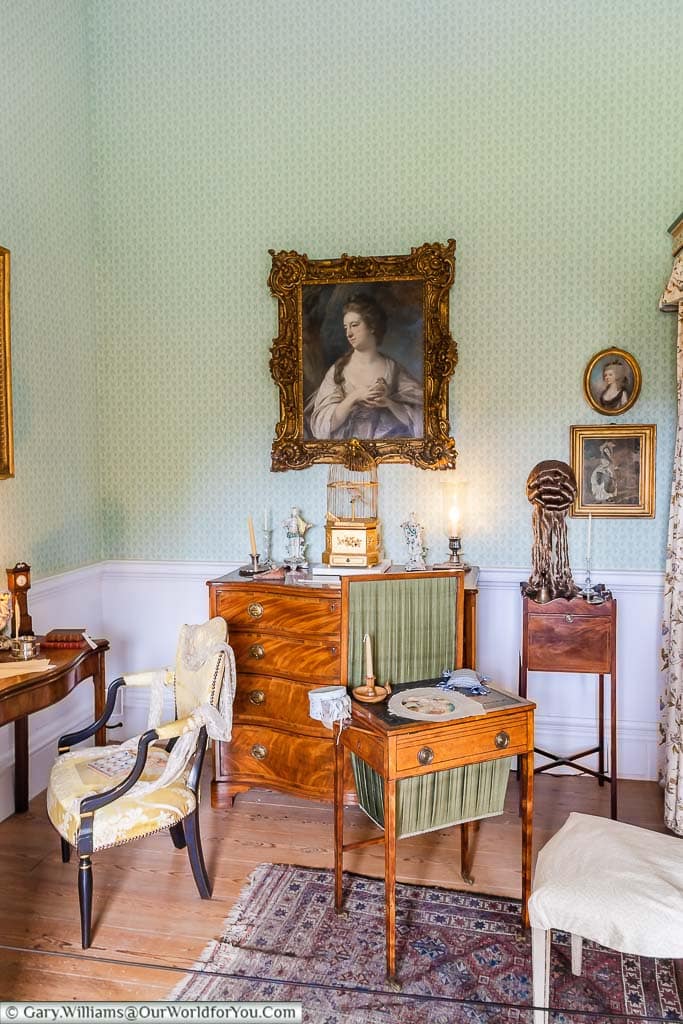
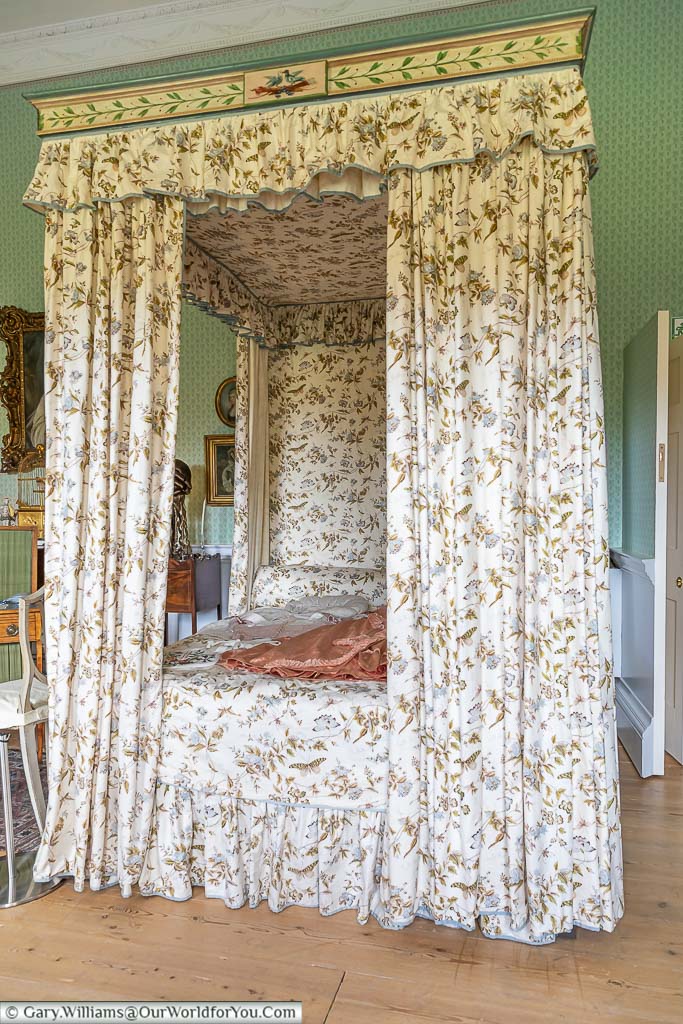
During the Georgian period, the ladies looked elegant and beautiful in their finery. However, this often came at a cost due to their lead-based make-up and the scented wax decorative hairstyles that attracted nits.
It was all pomp and grandeur, well, not for the ladies anyway.
Where to stay in Bath
No.1 Royal Crescent Withdrawing Room
The ultimate in Georgian luxuryThe next room we visit on the No.1 Royal Crescent tour is the Withdrawing Room. This room would have been the height of Georgian luxury and elegance.
The ladies of the house would withdraw to this room after dinner and partake in tea, which was extremely expensive at the time.
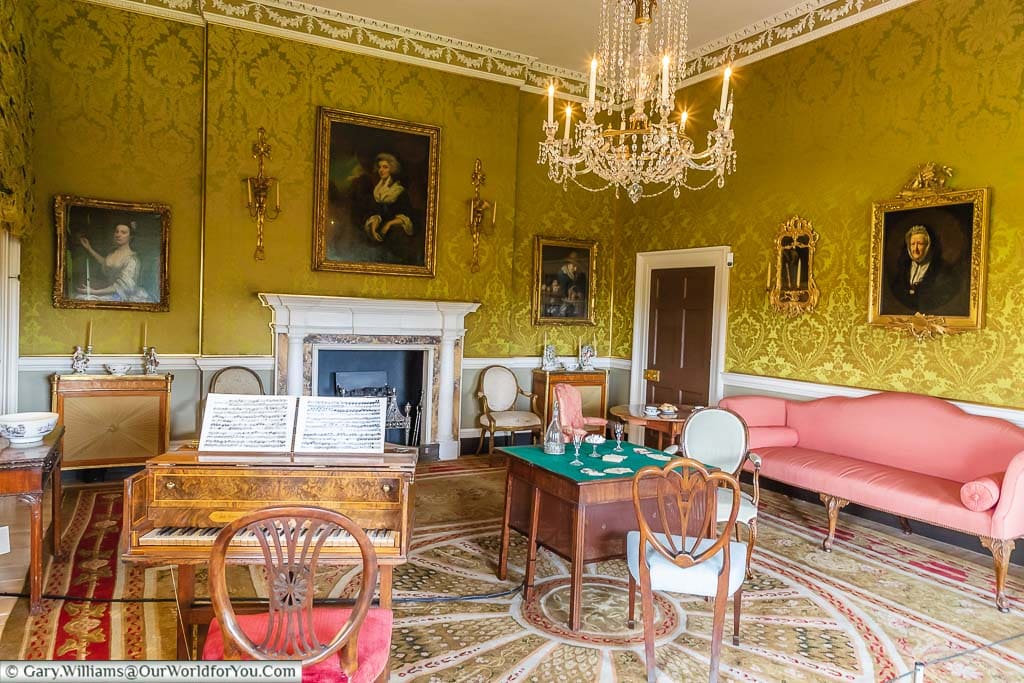
The Withdrawing Room is decorated sophisticatedly and very feminine; no expense would have been spared on the exquisite décor and the finer things in life.
Once the men had finished discussing business in the dining room, they would join the ladies to listen to them playing the harpsichord and often play cards.
The Gentleman’s Bedroom
Stylishly understatedThe Gentleman’s Bedroom was often a simpler affair than that of the lady’s boudoir, although just as stylish in a masculine way.
The wealthy homeowners would often seek out high-regarded furniture makers in the city and commission various pieces of furniture for their bedrooms. They would have included a large chest of drawers, a medical cabinet, and a beautifully crafted shaving stand.
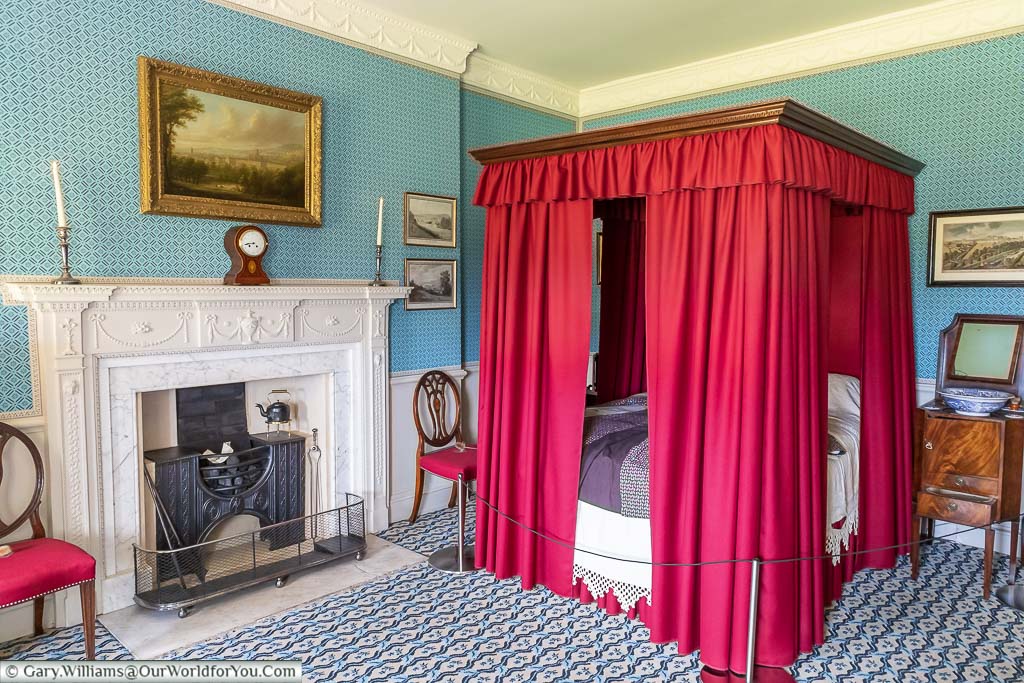
Join a Bath walking tour
During this fascinating 2-hour walking tour of Bath, you’ll discover the many delights of the ancient city and its magnificent Georgian architecture. Stroll around the Circus and the Royal Crescent and enjoy the charm of Pulteney Bridge.
If you select the option to include the visit to the breath-taking Roman Baths, then you’re in for a treat.
Exploring below stairs at No.1 Royal Crescent
The Georgian Kitchen & Scullery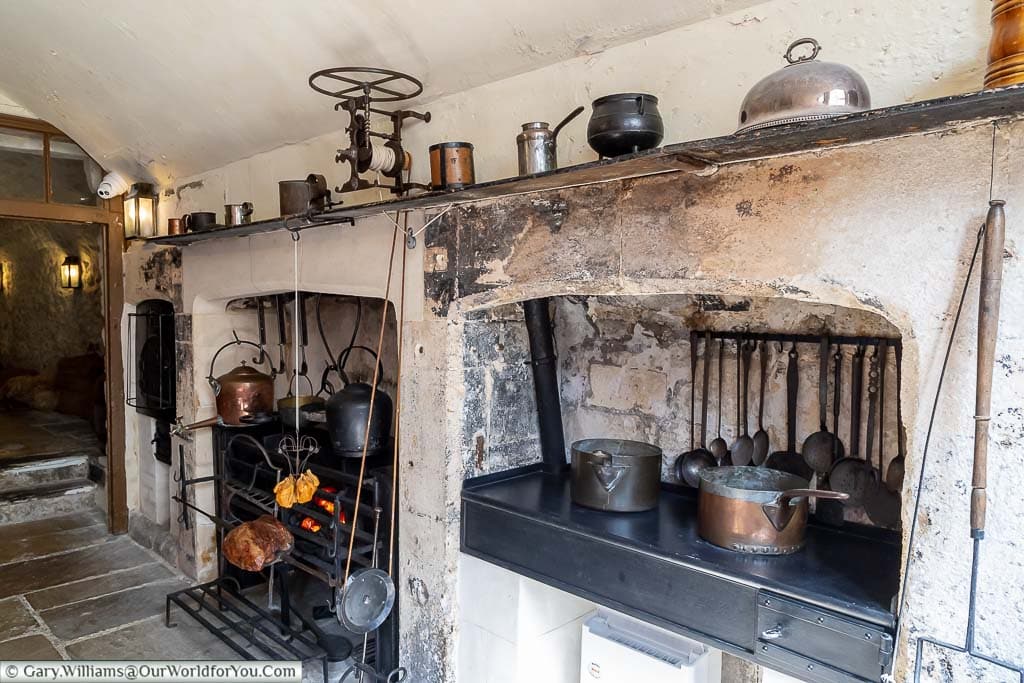
No.1 Royal Crescent entertained guests regularly; therefore, the cooks’ dishes needed to be very creative. When it came to the desserts, they had to be perfect.
Working next to open fires, boiling pans, and using the most basic tools must have been a huge challenge. All dishes had to be freshly prepared, and in addition to that, the food needed to arrive at the Dining Room table on time.
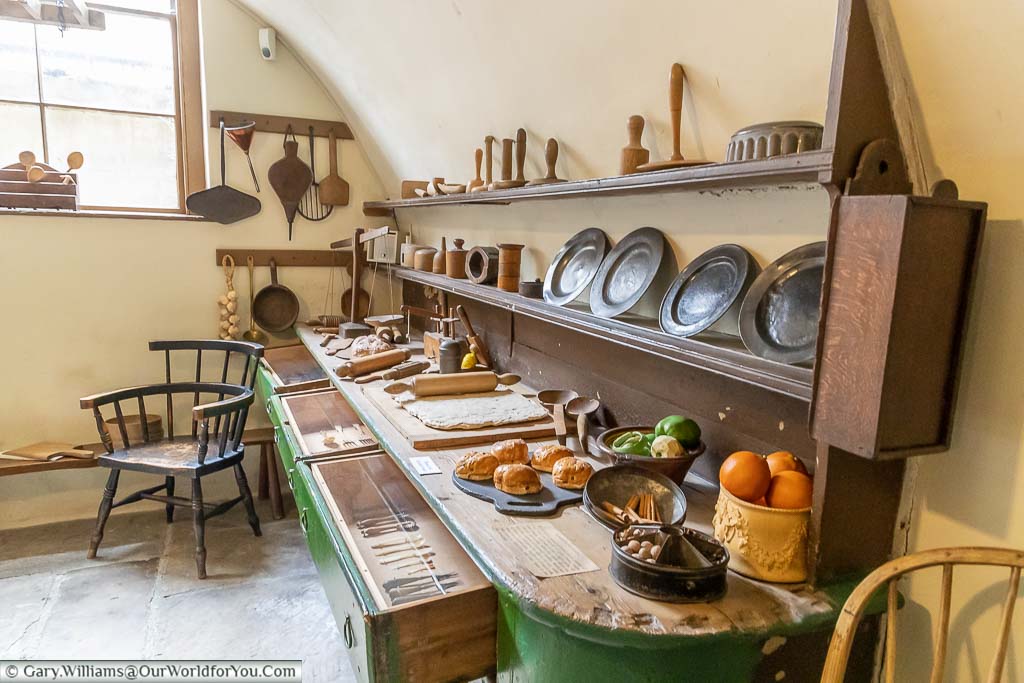
Next to the busy hot kitchen was the Scullery. The scullery would have been run by a scullery maid, and unfortunately, their role was the lowest of all the servants; they would work long hours for a pittance of a wage.
Usually, the scullery maid was a young girl; her job was to ensure everything was clean and tidy within the kitchen and scullery. Her duties were to wash the household laundry, scrub the floors, clean pots and pans, clear away old food, and a general skivvy around the basement.
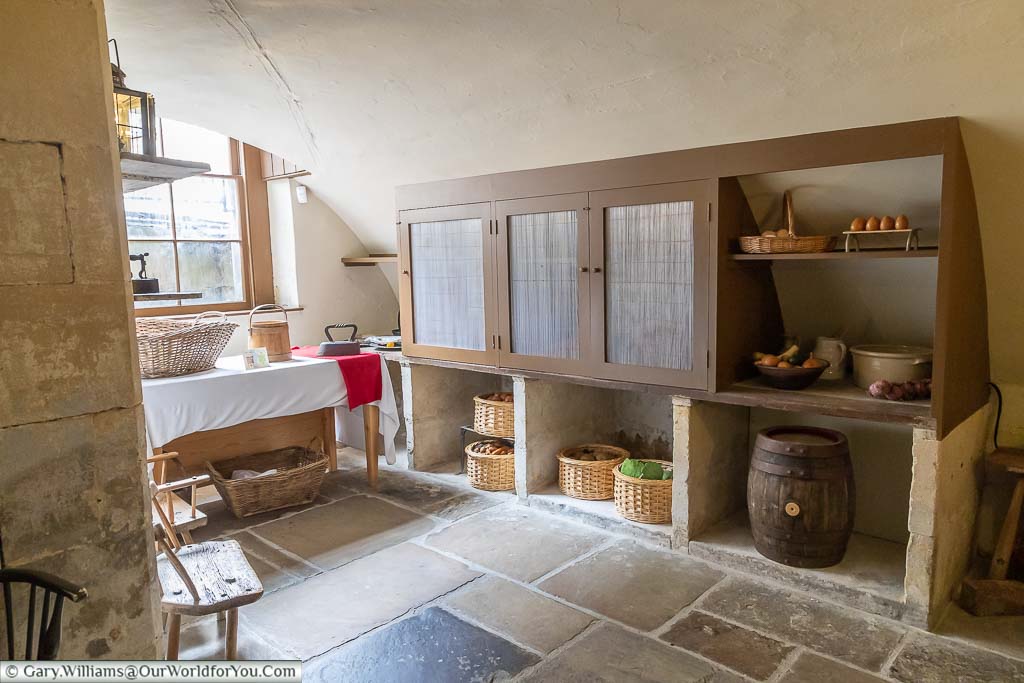
Visiting the Housekeeper’s Room
Then onto the Servants’ HallThe last couple of rooms we visit below stairs are the Housekeeper’s Room and the Servant’s Hall.
The Housekeeper was the most important female servant in the household. She would have usually been mature in her years and due to her status, would have had her own room, which was a huge privilege.
The role she performed was invaluable to her mistress.
The Housekeeper’s room was rudimentary compared to the rooms above stairs; however, it offered a high level of privacy and comfort. The room would have had a writing desk, personal store cupboards a simple dining table. This meant the housekeeper would dine in her own room and not in the Servants’ Hall.
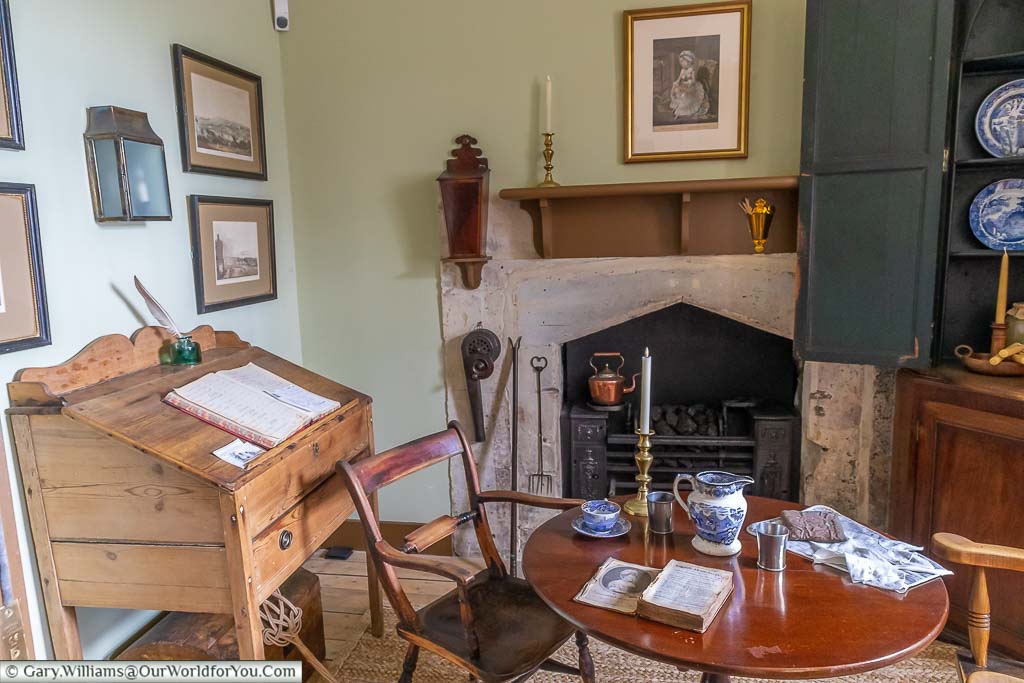
Our final stop during our visit to No.1 Royal Crescent was to the relatively large Servants’ Hall.
The Servants’ Hall would have been where the servants would have eaten together, and on rare occasions they had time, they would exchange stories with each other.
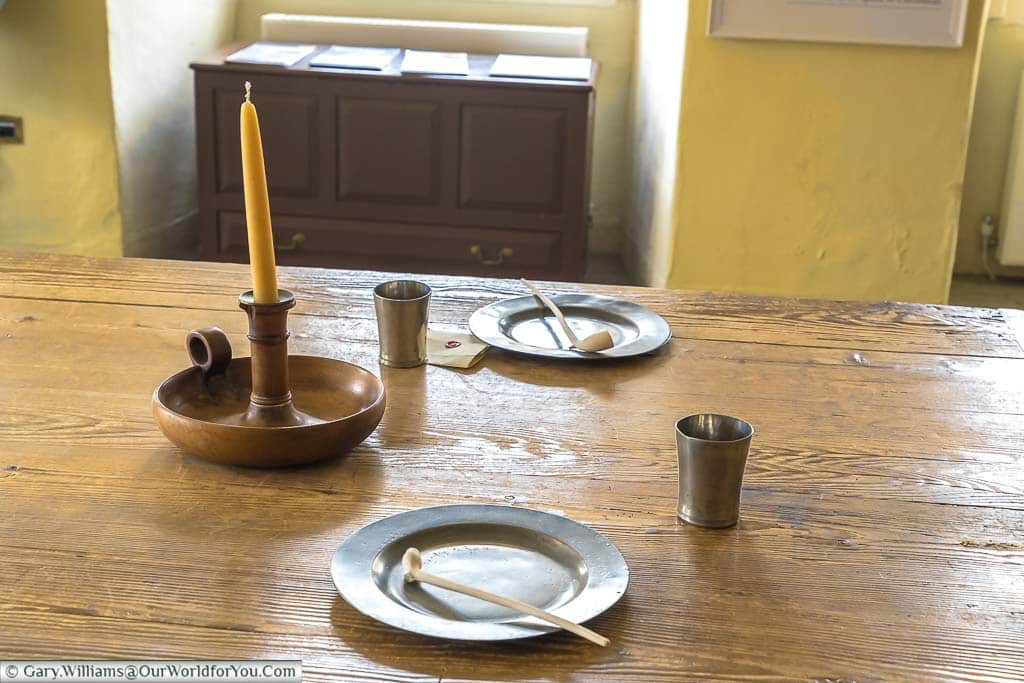
This room would have also stored a ready supply of ale as beer was the main drink due to untreated water. No.1 Royal Crescent obtained their water from a well, so it wasn’t surprising they had their own domestic brew house.
There were also rules within the Servants’ Hall, and failure to comply would have led to a fine.
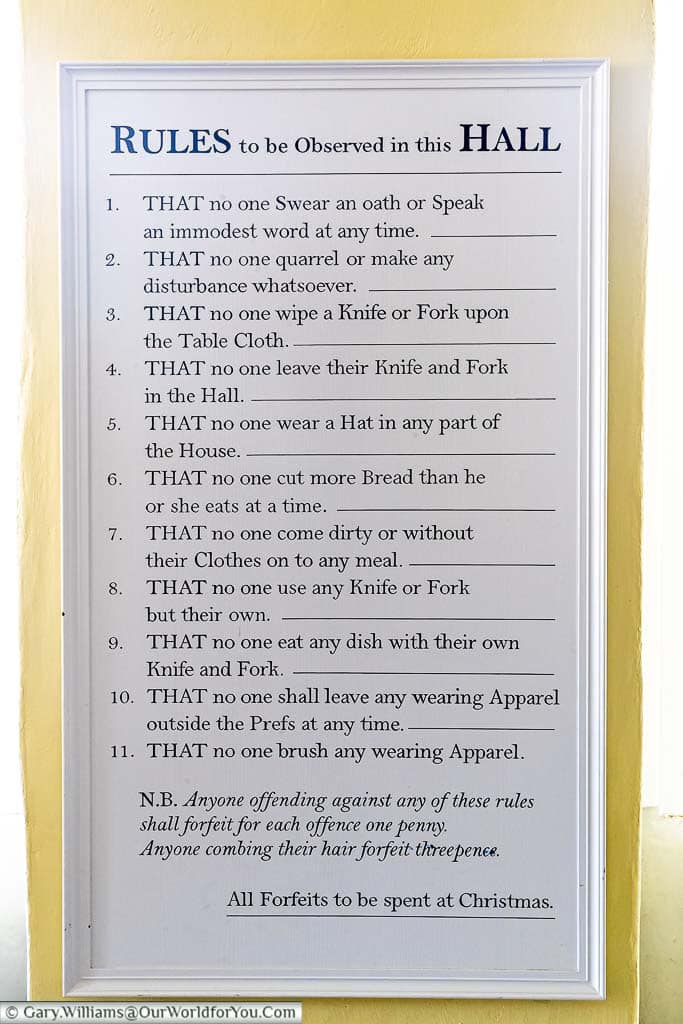
Often larger Georgian homes or estates would have employed a Butler, Footman, and a Valet. No.1 Royal Crescent probably only had one male servant to cover all three roles.
We are now at the end of our tour of No.1 Royal Crescent. It has been such a fantastic insight into a wealthy Georgian household and their hard-working servants below.
We have created a little YouTube video of our visit to No.1 Royal Crescent - why not check it out?
Why not subscribe to our YouTube channel and get the latest clips as we post them?
Disclaimer
* This post may contain links to affiliated sites where we earn a small commission at no additional charge to you.

